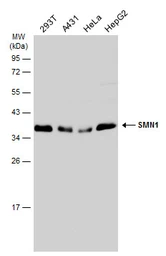SMN1 antibody
Cat. No. GTX101047
Cat. No. GTX101047
-
HostRabbit
-
ClonalityPolyclonal
-
IsotypeIgG
-
ApplicationsWB ICC/IF
-
ReactivityHuman

